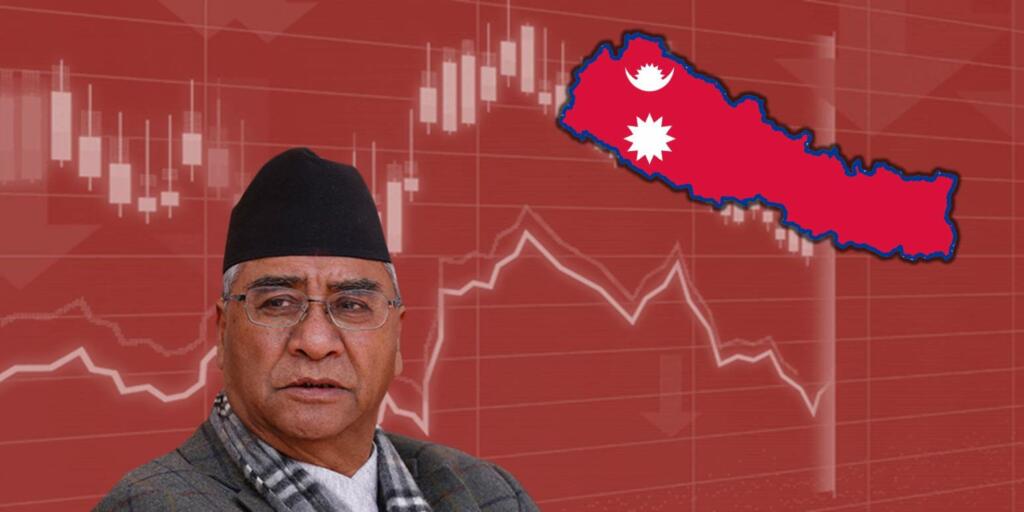Every economy depends on one sector or another to a large extent. For example, at this juncture of time, India mainly relies on Agriculture and manufacturing for keeping its population in good shape. However, if India decides to concentrate only on these two sectors only, its economy will crumble like a pack of cards. Something similar is happening in Nepal.
Inflation level is high in Nepal
Nepal is facing a severe economic crisis. The country whose healthy rate of inflation is 2 per cent is now witnessing 3.6 times the normal inflation level and it is now 7.2 per cent in Nepal. Experts in the energy sector are advising the Nepali government to implement measures such as a two-day weekend, odd-even traffic rule, quota at filling stations, discouraging vehicle use, carpooling, and even a ban on the import of petrol and diesel vehicles. It is pertinent to note that the appeal came in the wake of the Nepali government spending Nepali Rs 1.76 trillion for importing oil in the first 11 months of this fiscal.
Badly managed Forex
Nepal’s Forex reserves are drying up quicker than expected. According to varying estimates, Nepal’s forex reserve is only good enough to fund six and half months to seven months of its import requirements. Moreover, stakeholders are not even willing to take course corrective measures. Nepal’s export baskets comprise of those products which they do not even produce in sufficient quantity to feed their own population. Nepalese businessmen import palm oil and Soya oil from other countries and export them to any third destination to earn more revenue. It has led to skyrocketing import bills. In the eleven months of this fiscal year only, Nepal’s imports of edible oil were valued at Nepali Rs 113.87, more than 3 times jump over the 2018-19 value.
Remittances are not being used properly
Both fuel and edible oil put immense pressure on the Nepalese Forex reserve. However, up until now, remittances have come to rescue the economy of Nepal. In the first 10 months of this fiscal year, remittances from Nepalese people living outside the country were clocked at Nepali Rs 811.79 billion. In the wake of not much change expected to occur in the next two months, the country may end up receiving more than Nepali Rs 1 trillion in remittances.
Ideally, the huge remittances should have acted as a cushion for Nepal, just like they do for India. But, in Nepal’s case, it has led to significant negative consequences on the economy as well. Nepalese are not able to use these remittances judiciously. Rather than using this huge chunk of money for starting own businesses or saving in bank accounts, remittances are being used only for the sake of consumption. Again, consumption is not bad for the economy as it keeps the flow of money going, but over reliant on it only ends up creating disasters.
Service sector growth without manufacturing is hollow
People’s inclination towards consumption is visible in Nepal’s growth trajectory as well. More consumption means more demand for luxury items and places like hotels, and resorts among others. All these things come under the service sector. Interestingly, Nepal’s service sector has witnessed an increase in the last few years. This should have been a good sign and is, in fact, an indication of upward trajectory of an economy’s status towards a developed economy. But, in Nepal’s case, it has come off on a hollow base. Unlike developed economies, Nepal’s service sector is not built on the back of a strong manufacturing sector. Without manufacturing growth being strong, the service sector and henceforth economy of Nepal will collapse in the long run, simply because it does not have many products to consume and keep the economy floating.
The problem in manufacturing sector of Nepal is caused by the diversion of bank credits to not so much productive sectors of the economy. Around 20 per cent of the credit has gone to fund trading, which particularly represents wholesale and retail services, with the emphasis, especially on services. Only 7.8 per cent of loans went to agriculture. But, the biggest problem is that the production is constantly being denied good credit and last year only 15 per cent of the total loan portfolio was availed to it. No wonder, production capacity is less. Almost no bank in Nepal is in a position to lend because their credit deposit ratio has passed the red line of 90 per cent.
The situation in Nepal is bad. It is also a hotspot for those NGOs who work day and night to destabilise governments to keep their funding going and the Nepal government needs to be proactive in preventing the looming threat.
Support TFI:
Support us to strengthen the ‘Right’ ideology of cultural nationalism by purchasing the best quality garments from TFI-STORE.COM
